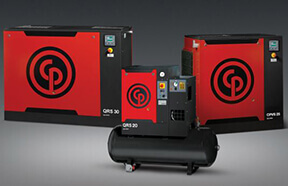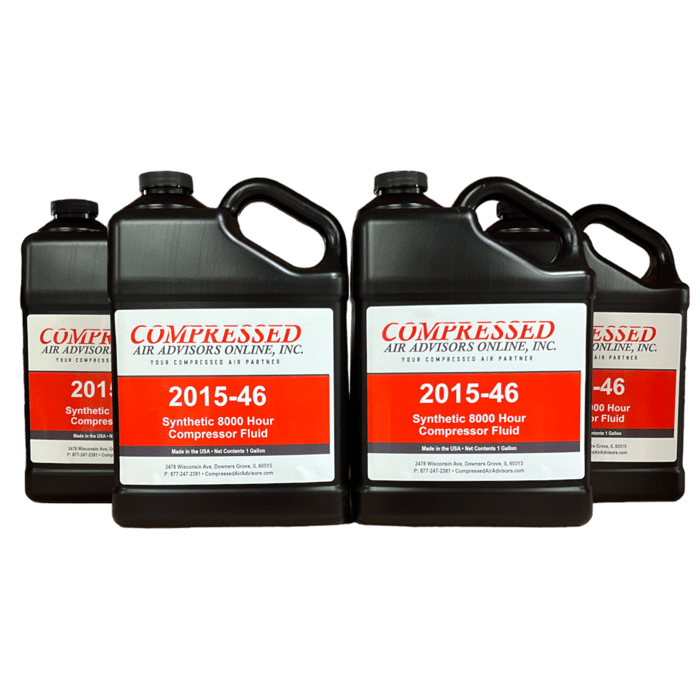Maintenance of Reciprocating Air Compressors
Reciprocating or piston air compressors comprise numerous dynamic components, underscoring the significance of consistent maintenance. Such practices are vital not only for optimizing the efficiency of all compressor parts but also for thwarting wear that could culminate in untimely malfunctions. The ensuing suggestions are intended to offer a roadmap for secure, dependable, and cost-effective operation and upkeep of reciprocating compressors.
Maintaining Air Compressor Cleanliness
Excessive dirt and debris stand as primary contributors to premature compressor breakdown. Operators hold a crucial responsibility in the realm of preventive maintenance, as they monitor dirt buildup during operation and promptly eliminate it. Employing compressed air to effectively cleanse and expel dirt or impurities on a consistent and scheduled basis serves as an uncomplicated and cost-effective approach to preserving the cleanliness of compressor components.
Reducing Vibrations
Vibration constitutes a prevalent concern that can precipitate the failure of a reciprocating compressor. Often stemming from inadequate securing, persistent vibration progressively loosens compressor elements, instigating misalignment, heightened bearing wear, and potentially severe mechanical malfunctions. Ensuring the compressor is securely fastened onto a level plane is pivotal. The judicious utilization of cost-effective vibration pads, installed correctly, can effectively mitigate or eradicate vibration-related complications.
Temperature Fluctuations
A rapid surge in operating temperature serves as an indicator that the compressor is experiencing excessive heat. In cases where the operator is unable to regulate this temperature surge, it is imperative to promptly halt compressor operation. Prolonged operation at elevated temperatures is a sure path to equipment breakdown. Temperature spikes may arise when crankcase oil levels dip below adequate thresholds, or when the compressor accumulates deposits of dirt, dust, or grime. Additionally, electric drive motors are susceptible to overheating. Adhering to proper bearing greasing as outlined in the operator's manual and maintaining motor cleanliness by preventing debris and dirt buildup can contribute significantly to ensuring years of trouble-free performance.
Piston Air Compressor Oil Care
Determining the timing for adding or replacing oil in a reciprocating air compressor hinges on factors such as model type and operational conditions. Generally, manufacturers suggest an oil change every quarter, although more frequent changes are advisable for heavy usage. Deviations from quarterly intervals are apparent, with select manufacturers offering enduring synthetic lubricants tailored for extended lifespans – usually 1 year or 2,000 hours, whichever comes first. Vigilant monitoring of fluid levels is a vital aspect of a comprehensive maintenance and equipment inspection regimen, with timely oil replenishment as a necessary step. Additionally, operators should be aware that certain reciprocating compressors are equipped with low oil-level monitoring mechanisms. These mechanisms can avert harm or premature pump malfunction resulting from running the compressor with insufficient oil.
Preventive Maintenance Checks
Consistent maintenance is integral to ensuring optimal performance for your machinery and all associated equipment. The smooth operation of your reciprocating air compressor directly impacts your business; any compressor shutdown could translate to business interruption. Regular servicing also plays a pivotal role in early detection and mitigation of potential issues before they escalate into lasting damage. Compressor manufacturers furnish precise maintenance schedules and recommend designated maintenance kits for proper upkeep. It's crucial to emphasize that during maintenance procedures, the equipment must be turned off and disconnected from the power source. Adhering to a systematic maintenance regimen not only minimizes service requests but also guarantees efficient compressor operation and prolongs its lifespan. Below is a sample checklist suitable for daily, weekly, monthly, and yearly assessments. For detailed insights into routine maintenance, defer to the manufacturer's guidelines presented in the operator's manual.
Sample Reciprocating Air Compressor Maintenance Checklist:
Daily:
- Check and Maintain the recommended lubricant level as per the manufacturer's guidelines.
- Perform this check a few minutes after the compressor shuts off.
- Drain the receiver tank, drop legs, and air distribution system traps to remove accumulated moisture.
- Conduct a visual inspection of the compressor ensuring safety guards are properly in place.
- Listen for unusual noise or vibration during compressor operation.
- Inspect for oil leaks around compressor components.
- Examine all pressurized components for signs of rust, cracks, or leaks. If any issues are detected immediately stop the equipment use and release system pressure.
Weekly:
- Manually test the pressure relief valves to ensure their proper functionality.
- Clean the cooling surfaces of the intercooler, aftercooler, and compressor to maintain efficient heat dissipation.
- Inspect the system for air leaks by applying soapy water to joints during the compressor operation and watch for bubble formation.
- Check the lubricant contamination and change if necessary.
Monthly:
- Verify and adjust belt tension if required to prevent slippage and ensure proper power transmission.
Quarterly:
- Perform an oil change according to the manufacturer's recommendations.
- Inspect valves for signs of rust, wear, and carbon build up that could affect performance.
- Clean or replaces the air intake filter, and consider more checks under humid or dusty conditions.
Annually:
- Thoroughly inspect the pressure switch diaphragm and contacts for proper operation.
- Examine the contact points in the motor / starter to ensure reliable electrical connections.
Following this maintenance checklist diligently can help you sustain the optimal performance, effciency and longevity of your reciprocating air compressor, Remember to refer the manufacturer's guidelines and the operator's manual for your specific compressor model for more detailed and tailored maintenance instructions.
Compressed Air Advisors Online Inc. carries and can get maintenance items for most air compressor manufacturers.
You can click the image below for a link to reciprocating compressor Parts or call us at 877.247.2381 for assistance.









